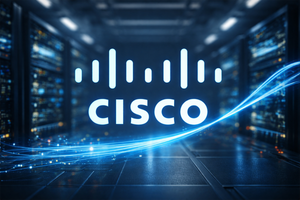Lightricks, a pioneer in creative AI, has announced the release of LTX-2, an groundbreaking open-source AI video foundation model that integrates synchronized audio and video generation. This monumental development, unveiled on October 23, 2025, marks a pivotal moment for AI-driven content creation, promising to democratize professional-grade video production and accelerate creative workflows across industries.
LTX-2 is not merely an incremental update; it represents a significant leap forward by offering the first complete open-source solution for generating high-fidelity video with intrinsically linked audio. This multimodal foundation model seamlessly intertwines visuals, motion, dialogue, ambiance, and music, ensuring a cohesive and professional output from a single system. Its open-source nature is a strategic move by Lightricks, aiming to foster unprecedented collaboration and innovation within the global AI community, setting a new benchmark for accessibility in advanced AI video capabilities.
Technical Deep Dive: Unpacking LTX-2's Breakthrough Capabilities
LTX-2 stands out with a suite of technical specifications and capabilities designed to redefine speed and quality in video production. At its core, the model's ability to generate synchronized audio and video simultaneously is a game-changer. Unlike previous approaches that often required separate audio generation and laborious post-production stitching, LTX-2 creates both elements in a single, cohesive process, streamlining the entire workflow for creators.
The model boasts impressive resolution and speed. It can deliver native 4K resolution at 48 to 50 frames per second (fps), achieving what Lightricks terms "cinematic fidelity." For rapid ideation and prototyping, LTX-2 can generate initial six-second videos in Full HD in as little as five seconds, a speed that significantly outpaces many existing models, including some proprietary offerings that can take minutes for similar outputs. This "real-time" generation capability means videos can be rendered faster than they can be played back, a crucial factor for iterative creative processes. Furthermore, LTX-2 is designed for "radical efficiency," claiming up to 50% lower compute costs compared to rival models, thanks to a multi-GPU inference stack. Crucially, it runs efficiently on high-end consumer-grade GPUs, democratizing access to professional-level AI video generation.
LTX-2 is built upon the robust DiT (Denoising Diffusion Transformer) architecture and offers extensive creative control. Features like multi-keyframe conditioning, 3D camera logic, and LoRA (Low-Rank Adaptation) fine-tuning allow for precise frame-level control and consistent artistic style. It supports various inputs, including depth and pose control, video-to-video, image-to-video, and text-to-video generation. Initial reactions from the AI research community, particularly on platforms like Reddit's r/StableDiffusion, have been overwhelmingly positive, with developers expressing excitement over its promised speed, 4K fidelity, and the integrated synchronized audio feature. The impending full open-source release of model weights and tooling by late November 2025 is highly anticipated, as it will allow researchers and developers worldwide to delve into the model's workings, build upon its foundation, and contribute to its improvement.
Industry Impact: Reshaping the Competitive Landscape
Lightricks' LTX-2, with its open-source philosophy and advanced capabilities, is set to significantly disrupt the AI industry, influencing tech giants, established AI labs, and burgeoning startups. The model's ethical training on fully-licensed data from stock providers like Getty Images (NYSE: GETY) and Shutterstock (NYSE: SSTK) also mitigates copyright concerns for users, a crucial factor in commercial applications.
For numerous AI companies and startups, LTX-2 offers a powerful foundation, effectively lowering the barrier to entry for developing cutting-edge AI applications. By providing a robust, open-source base, it enables smaller entities to innovate more rapidly, specialize their offerings, and reduce development costs by leveraging readily available code and weights. This fosters a more diverse and competitive market, allowing creativity to flourish beyond the confines of well-funded labs.
The competitive implications for major AI players are substantial. LTX-2 directly challenges proprietary models like OpenAI's (NASDAQ: MSFT) Sora 2, particularly with its superior speed in initial video generation. While Sora 2 has demonstrated impressive visual fidelity, Lightricks strategically targets professional creators and filmmaking workflows, contrasting with Sora 2's perceived focus on consumer and social media markets. Similarly, LTX-2 presents a formidable alternative to Google's (NASDAQ: GOOGL) Veo 3.1, which is open-access but not fully open-source, giving Lightricks a distinct advantage in community-driven development. Adobe (NASDAQ: ADBE), with its Firefly generative AI tools, also faces increased competition, as LTX-2, especially when integrated into Lightricks' LTX Studio, offers a comprehensive AI filmmaking platform that could attract creators seeking more control and customization outside a proprietary ecosystem. Even RunwayML, known for its rapid asset generation, will find LTX-2 and LTX Studio to be strong contenders, particularly for narrative content requiring character consistency and end-to-end workflow capabilities.
LTX-2's potential for disruption is far-reaching. It democratizes video production by simplifying creation and reducing the need for extensive traditional resources, empowering independent filmmakers and marketing teams with limited budgets to produce professional-grade videos. The shift from proprietary to open-source models could redefine business models across the industry, driving a broader adoption of open-source foundational AI. Moreover, the speed and accessibility of LTX-2 could unlock novel applications in gaming, interactive shopping, education, and social platforms, pushing the boundaries of what is possible with AI-generated media. Lightricks strategically positions LTX-2 as a "complete AI creative engine" for real production workflows, leveraging its open-source nature to drive mass adoption and funnel users to its comprehensive LTX Studio platform for advanced editing and services.
Wider Significance: A New Era for Creative AI
The release of LTX-2 is a landmark event within the broader AI landscape, signaling the maturation and democratization of generative AI, particularly in multimodal content creation. It underscores the ongoing "generative AI boom" and the increasing trend towards open-source models as drivers of innovation. LTX-2's unparalleled speed and integrated audio-visual generation represent a significant step towards more holistic AI creative tools, moving beyond static images and basic video clips to offer a comprehensive platform for complex video storytelling.
This development will profoundly impact innovation and accessibility in creative industries. By enabling rapid ideation, prototyping, and iteration, LTX-2 accelerates creative workflows, allowing artists and filmmakers to explore ideas at an unprecedented pace. Its open-source nature and efficiency on consumer-grade hardware democratize professional video production, leveling the playing field for aspiring creators and smaller teams. Lightricks envisions AI as a "co-creator," augmenting human potential and allowing creators to focus on higher-level conceptual aspects of their work. This could streamline content production for advertising, social media, film, and even real-time applications, fostering an "Open Creativity Stack" where tools like LTX-2 empower limitless experimentation.
However, LTX-2, like all powerful generative AI, raises pertinent concerns. The ability to generate highly realistic video and audio rapidly increases the potential for creating convincing deepfakes and spreading misinformation, posing ethical dilemmas and challenges for content verification. While Lightricks emphasizes ethical training data, the open-source release necessitates careful consideration of how the technology might be misused. Fears of job displacement in creative industries also persist, though many experts suggest a shift towards new roles requiring hybrid skill sets and AI-human collaboration. There's also a risk of creative homogenization if many rely on the same models, highlighting the ongoing need for human oversight and unique artistic input.
LTX-2 stands as a testament to the rapid evolution of generative AI, building upon milestones such as Generative Adversarial Networks (GANs), the Transformer architecture, and especially Diffusion Models. It directly advances the burgeoning field of text-to-video AI, competing with and pushing the boundaries set by models like OpenAI's Sora 2, Google's Veo 3.1, and RunwayML's Gen-4. Its distinct advantages in speed, integrated audio, and open-source accessibility mark it as a pivotal development in the journey towards truly comprehensive and accessible AI-driven media creation.
Future Developments: The Horizon of AI Video
The future of AI video generation, spearheaded by innovations like LTX-2, promises a landscape of rapid evolution and transformative applications. In the near-term, we can expect LTX-2 to continue refining its capabilities, focusing on even greater consistency in motion and structure for longer video sequences, building on the 10-second clips it currently supports and previous LTXV models that achieved up to 60 seconds. Lightricks' commitment to an "Open Creativity Stack" suggests further integration of diverse AI models and tools within its LTX Studio platform, fostering a fluid environment for professionals.
The broader AI video generation space is set for hyper-realistic and coherent video generation, with significant improvements in human motion, facial animations, and nuanced narrative understanding anticipated within the next 1-3 years. Real-time and interactive generation, allowing creators to "direct" AI-generated scenes live, is also on the horizon, potentially becoming prevalent by late 2026. Multimodal AI will deepen, incorporating more complex inputs, and AI agents are expected to manage entire creative workflows from concept to publication. Long-term, within 3-5 years, experts predict the emergence of AI-generated commercials and even full-length films indistinguishable from reality, with AI gaining genuine creative understanding and emotional expression. This will usher in a new era of human-computer collaborative creation, where AI amplifies human ingenuity.
Potential applications and use cases are vast and varied. Marketing and advertising will benefit from hyper-personalized ads and rapid content creation. Education will be revolutionized by personalized video learning materials. Entertainment will see AI assisting with storyboarding, generating cinematic B-roll, and producing entire films. Gaming will leverage AI for dynamic 3D environments and photorealistic avatars. Furthermore, AI video will enable efficient content repurposing and enhance accessibility through automated translation and localized voiceovers.
Despite the exciting prospects, significant challenges remain. Ethical concerns surrounding bias, misinformation (deepfakes), privacy, and copyright require robust solutions and governance. The immense computational demands of training and deploying advanced AI models necessitate sustainable and efficient infrastructure. Maintaining creative control and ensuring AI serves as an amplifier of human artistry, rather than dictating a homogenized aesthetic, will be crucial. Experts predict that addressing these challenges through ethical AI development, transparency, and accountability will be paramount to building trust and realizing the full potential of AI video.
Comprehensive Wrap-up: A New Chapter in AI Creativity
Lightricks' release of LTX-2 marks a defining moment in the history of artificial intelligence and creative technology. By introducing the first complete open-source AI video foundation model with integrated synchronized audio and video generation, Lightricks has not only pushed the boundaries of what AI can achieve but also championed a philosophy of "open creativity." The model's exceptional speed, 4K fidelity, and efficiency on consumer-grade hardware make professional-grade AI video creation accessible to an unprecedented number of creators, from independent artists to large production houses.
This development is highly significant because it democratizes advanced AI capabilities, challenging the proprietary models that have largely dominated the field. It fosters an environment where innovation is driven by a global community, allowing for rapid iteration, customization, and the development of specialized tools. LTX-2's ability to seamlessly generate coherent visual and auditory narratives fundamentally transforms the creative workflow, enabling faster ideation and higher-quality outputs with less friction.
Looking ahead, LTX-2's long-term impact on creative industries will be profound. It will likely usher in an era where AI is an indispensable co-creator, freeing human creatives to focus on higher-level conceptualization and storytelling. This will lead to an explosion of diverse content, personalized media experiences, and entirely new forms of interactive entertainment and education. The broader AI landscape will continue to see a push towards more multimodal, efficient, and accessible models, with open-source initiatives playing an increasingly critical role in driving innovation.
In the coming weeks and months, the tech world will be closely watching for the full open-source release of LTX-2's model weights, which will unleash a wave of community-driven development and integration. We can expect to see how other major AI players respond to Lightricks' bold open-source strategy and how LTX-2 is adopted and adapted in real-world production environments. The evolution of Lightricks' "Open Creativity Stack" and LTX Studio will also be key indicators of how this foundational model translates into practical, user-friendly applications, shaping the future of digital storytelling.
This content is intended for informational purposes only and represents analysis of current AI developments.
TokenRing AI delivers enterprise-grade solutions for multi-agent AI workflow orchestration, AI-powered development tools, and seamless remote collaboration platforms.
For more information, visit https://www.tokenring.ai/.






